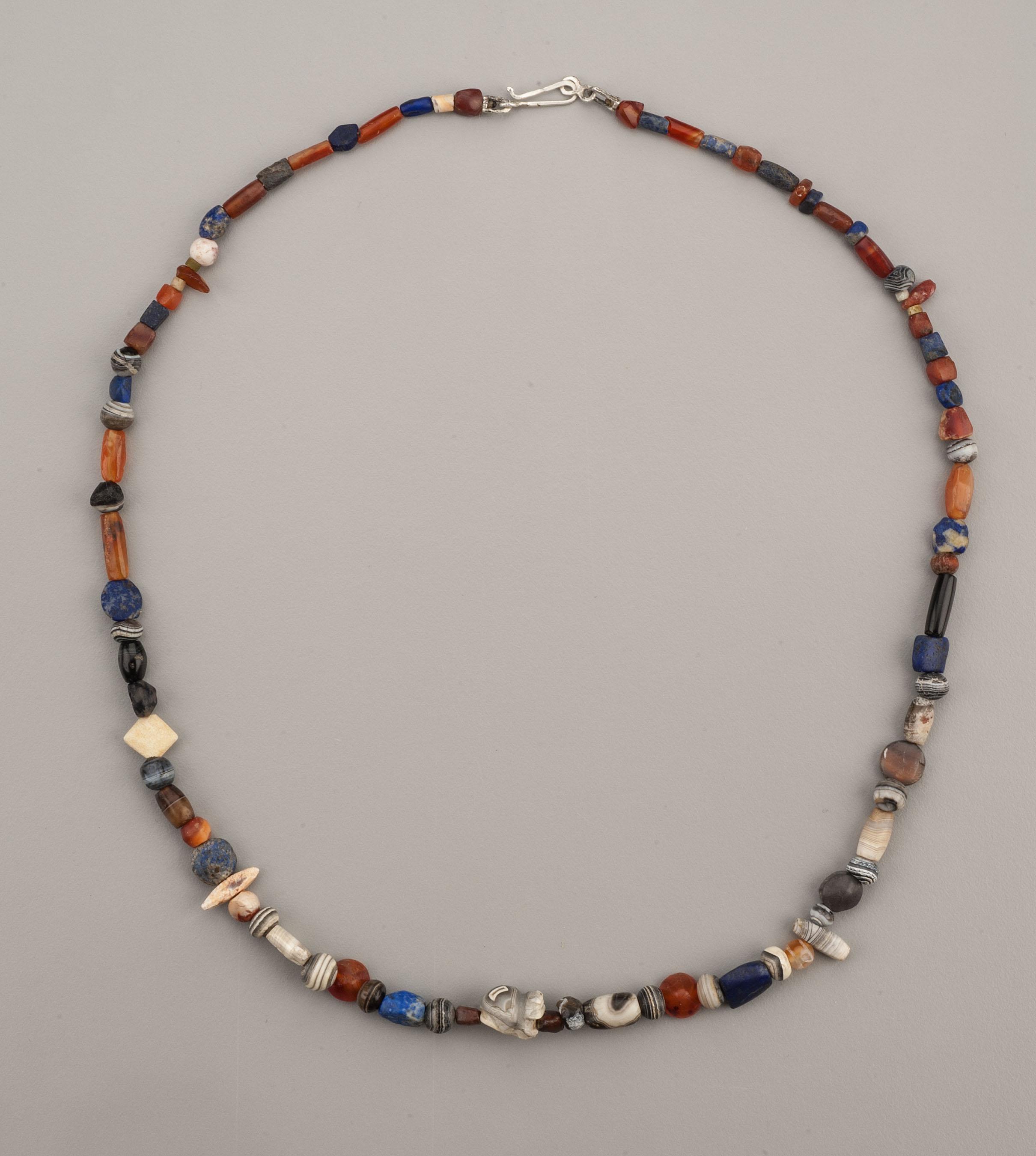Ancient Carnelian, Lapis, and Agate Beads with Carved Agate Frog
Collection:
Swat Valley
Material:
Lapis Lazuli, Carnelian, Agate, Turquoise, Silver
Size:
The necklace is 23 5/8 inches (60.3cm) in length. The necklace weighs 32 gm.
Price:
$2,500.00
A necklace of eighty-six beads: twenty-one lapis lazuli, thirty-one carnelian, thirty agate, and four small turquoise disc beads. The agate bead at the apex of the necklace is in the form of a frog. There are a miscellany of forms: a carnelian “spar” (whitened from burial in alkaline soil), a thin trapezoidal whitened agate bead, two carnelian cone shaped beads and three of lapis, drilled across the bottom parallel to the round base, one also of agate, there are round agate beads and barrels, carnelian barrels and tubes with both tubular shapes and four flat sides, four sided carnelian beads with opposite triangular sides, a small flattened leech shaped lapis bead, cubic beads of both lapis and carnelian, two carnelian pendant spars and one agate, drilled through the side at one end, and others. The beading tips and hook and eye clasp are fine silver. The agate frog amulet is 1.3 cm in length, 8.5mm in height and 1.05 cm in width. The drill hole emerges at the back between the two legs and at the front from under the chin. The diameter of the drill hole is 2mm. The agate material has been whitened from chemical interaction with alkaline soil. The carving is precise and expressive. The two eyes bulge outward on the top of the head and are partially undercut by a groove which gives the impression that the frog has a fierce expression. This is augmented by the wide mouth with a sight downturn at each side. The chin protrudes beneath the groove that indicates the mouth which further confirms the frog's belligerent nature. This is an intimidating bullfrog despite the miniature size of the amulet. The life cycle of the frog is a story of transformation, with the tadpole swimming in the water and then changing form to emerge onto the land. The tadpoles seem to appear overnight in great numbers as if from nowhere. Then they mysteriously transform into frogs. These symbolic associations of the frog made it a talisman of abundance, bounty and magical transformation. Frogs appear suddenly following the first rains of spring in great numbers and are therefore harbingers of growth and fertility. The transformational nature of their life cycle, from egg to tadpole to frog is also notable. They begin life in the water, later transitioning to land, all of which is symbolically important. Humans also make this transition at birth leaving the watery world of the womb and being born onto the land. This association accounts for the linking of the symbol of the frog to the uterus. There is a structure to the arrangement of the beads, a bilateral symmetry of sorts, but the appearance is one of randomness. It is very likely that the use of beads in necklaces in the ancient world was a lot like the use in this necklace, more random than structured. We in the modern world place primary importance on the look of the jewelry, and so we favor structure and symmetry in both form and color. In the ancient world the primary purpose was amuletic and protective. Beads were a way to insure, by means of their magical properties, that inimical forces would be neutralized and kept at bay. Of course, the beads would grab the attention, ward off the evil eye, and channel the protective powers of the earth. Even the sound of beads clicking and clacking together would offer protective help and security in living in an uncertain world.
